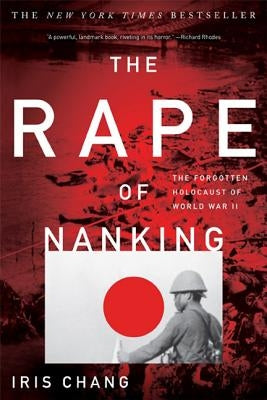1
/
of
1
Basic Books
The Rape of Nanking: The Forgotten Holocaust of World War II
The Rape of Nanking: The Forgotten Holocaust of World War II
Regular price
$21.99 USD
Regular price
Sale price
$21.99 USD
Shipping calculated at checkout.
Quantity
Couldn't load pickup availability
The New York Times bestselling account of one of history's most brutal -- and forgotten -- massacres, when the Japanese army destroyed China's capital city on the eve of World War II In December 1937, one of the most horrific atrocities in the long annals of wartime barbarity occurred. The Japanese army swept into the ancient city of Nanking (what was then the capital of China), and within weeks, more than 300,000 Chinese civilians and soldiers were systematically raped, tortured, and murdered. In this seminal work, Iris Chang, whose own grandparents barely escaped the massacre, tells this history from three perspectives: that of the Japanese soldiers, that of the Chinese, and that of a group of Westerners who refused to abandon the city and created a safety zone, which saved almost 300,000 Chinese. Drawing on extensive interviews with survivors and documents brought to light for the first time, Iris Chang's classic book is the definitive history of this horrifying episode. Chang vividly, methodically, records what happened, piecing together the abundant eyewitness reports into an undeniable tapestry of horror. - Adam Hochschild, Salon
Author: Iris Chang
Publisher: Basic Books
Published: 01/10/2012
Pages: 360
Binding Type: Paperback
Weight: 0.75lbs
Size: 8.10h x 5.40w x 1.00d
ISBN: 9780465068364
Author: Iris Chang
Publisher: Basic Books
Published: 01/10/2012
Pages: 360
Binding Type: Paperback
Weight: 0.75lbs
Size: 8.10h x 5.40w x 1.00d
ISBN: 9780465068364
About the Author
Iris Chang (1968-2004) lived and worked in California. She was a graduate of the University of Illinois at Urbana and worked briefly as a reporter in Chicago before winning a graduate fellowship to the writing seminar program at The Johns Hopkins University. Her first book, Thread of the Silkworm (the story of Tsien Hsue-shen, father of the People's Republic of China's missile program) received worldwide critical acclaim. She was the recipient of the John T. and Catherine D. MacArthur Foundation's Program on Peace and International Cooperation award, as well as major grants from the National Science Foundation, the Pacific Cultural Foundation, and the Harry Truman Library.
Share


